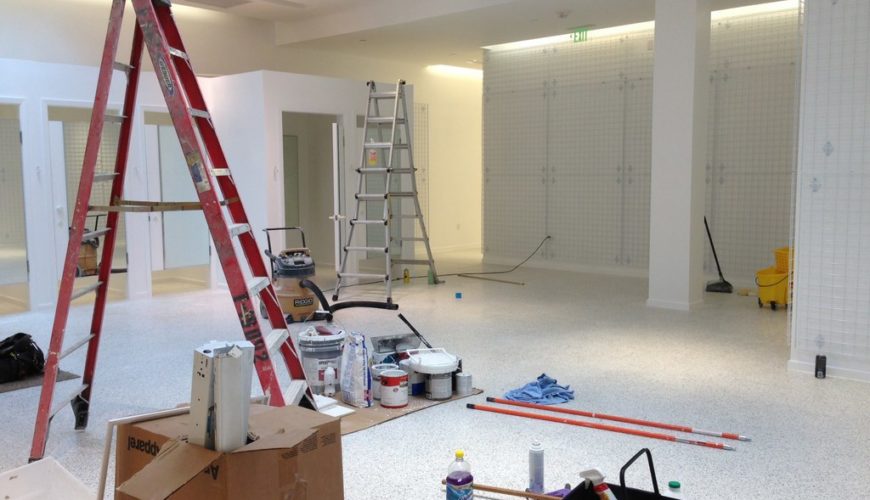Makati City, known for its bustling urban landscape, is spearheading a movement towards sustainability. At the heart of this endeavor lies the commitment to implement sustainable practices, particularly in construction cleanup. As construction projects shape the city’s skyline, it becomes imperative to ensure that these activities are carried out with minimal environmental impact. This blog delves into Makati City’s journey towards a cleaner future through the adoption of sustainable practices in construction cleanup.
Understanding Sustainable Construction Cleanup
Sustainable construction cleanup entails employing environmentally conscious strategies to mitigate the adverse effects of construction activities. In Makati City, this involves addressing challenges such as excessive waste generation, energy consumption, and water usage. By embracing sustainable practices, the city aims to uphold its commitment to environmental stewardship and promote a healthier, more resilient community.
Sustainable Practices in Construction Cleanup
- Efficient Waste Management Strategies
- Recycling and Reusing Materials: Makati City emphasizes the importance of recycling and reusing construction materials to minimize waste sent to landfills.
- Composting Organic Waste: Through composting initiatives, organic waste from construction sites is repurposed into nutrient-rich soil amendments.
- Proper Disposal of Hazardous Materials: Strict protocols are in place to ensure the safe disposal of hazardous materials, preventing harm to both the environment and public health.
- Energy-Efficient Equipment and Machinery
- Use of Electric or Hybrid-Powered Vehicles: The adoption of electric or hybrid-powered vehicles reduces emissions and lowers the carbon footprint of construction activities.
- Implementation of Energy-Saving Technologies: Makati City encourages the use of energy-saving technologies on construction sites, such as LED lighting and efficient HVAC systems, to minimize energy consumption.
- Adoption of Green Building Standards
- Incorporating Eco-Friendly Materials: Builders are encouraged to use eco-friendly materials that promote energy efficiency and sustainability, such as recycled steel and sustainable wood.
- Designing for Energy Efficiency: Green building standards prioritize energy-efficient designs, including proper insulation, passive solar heating, and natural ventilation.
- Implementing Green Certification Programs: Makati City incentivizes developers to pursue green certifications, such as LEED or EDGE, to recognize and reward sustainable building practices.
- Water Conservation Measures
- Rainwater Harvesting Systems: Construction sites incorporate rainwater harvesting systems to collect and store rainwater for non-potable uses, reducing reliance on municipal water sources.
- Water Recycling and Reuse Initiatives: Innovative water recycling technologies are employed to treat and reuse wastewater generated during construction activities, conserving precious freshwater resources.
- Community Involvement and Awareness Campaigns
- Engaging with Local Communities: Makati City actively engages with local communities to raise awareness about the importance of sustainable construction practices and garner support for environmental initiatives.
- Educating Stakeholders: Through educational programs and outreach efforts, stakeholders are empowered with knowledge about sustainable construction cleanup practices, fostering a culture of environmental responsibility.
Benefits of Sustainable Construction Cleanup
- Environmental Benefits: Reduced carbon emissions, preservation of natural resources, and protection of ecosystems.
- Economic Advantages: Cost savings through efficient resource utilization and potential for long-term financial returns.
- Social Impacts and Community Engagement: Improved quality of life, enhanced public health, and strengthened community bonds through collaborative environmental initiatives.
Challenges and Solutions
- Common Challenges: Regulatory barriers, cost implications, and resistance to change.
- Solutions: Collaboration among stakeholders, financial incentives, and technological innovation to overcome challenges and drive progress.
Future Outlook: Makati City’s Path Towards a Clean and Sustainable Future
- Emerging Trends and Technologies: Integration of advanced technologies such as Building Information Modeling (BIM) and Internet of Things (IoT) for smarter, more sustainable construction practices.
- Makati City’s Future Plans: Continued investment in sustainable infrastructure, policies, and partnerships to foster a greener, more resilient city.
- Role of Stakeholders: Collective action and collaboration among government agencies, businesses, and communities to achieve shared sustainability goals.
Takeaway
Makati City is at the forefront of the sustainable construction cleanup movement, demonstrating its unwavering commitment to environmental stewardship and community well-being. By embracing innovative technologies, fostering stakeholder engagement, and prioritizing sustainability in construction practices, Makati City is paving the way towards a cleaner, greener future for generations to come. Let us join hands in building a brighter tomorrow, one sustainable construction project at a time.
When it comes to post construction cleaning Makati City , Click n’ Clean stands out as the ultimate expert, ensuring a spotless and pristine space for your newly completed project.

